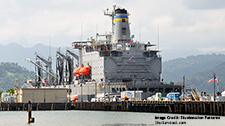West Asian minilateral geometry and India: Will I2-U2 usher the elusive peace?

Jagannath P. Panda
Introduction:
In April, the United Arab Emirates (UAE) Minister of State for Foreign Trade, Thani Al Zeyoudi, announced that the recently concluded free trade agreement (FTA) between India and the UAE – the Comprehensive Economic Partnership Agreement (CEPA) – would come into force on May 1. That the deal was completed in less than three months is a testimony to the newly sensitized Indian bureaucratic mindset about diverse diplomatic outreach (from East Asia to Latin America), including non-traditional partners. It also demonstrates India’s changing international economic post-pandemic outlook, as New Delhi emphasizes concluding FTAs as a pathway for greater economic growth and development. Ripple effects from the deal are already showing: India’s Reliance Industries Limited and the Abu Dhabi Chemicals Derivatives Company RSC Limited (TA’ZIZ) have forged a USD 2 billion partnership deal that will produce chemicals within the UAE and bring a host of new opportunities for further industrial and energy cooperation – as well as people-to-people interactions – between the two countries.
You can read the full article on TRENDS Research & Advisory’s website.
Related Publications
-
Not Drawing a Parallel. Ukraine and Taiwan: An Indian Perspective
Russia’s war against Ukraine has not only had economic, diplomatic, and geopolitical repercussions, but also exaggerated the fear of accelerated conflicts in the Indo-Pacific, a region with several unresolved conflicts […]
-
Needed, a Framework to Protect Undersea Cables
In the data-driven world we live in, submarine cables are the arteries that connect nation-states and their people in literally every human activity, including trade, commerce, entertainment, and social interactions. […]
-
India-Japan-Philippines: A Strategic Maritime Trilateral or More?
Regional states like India, Japan, and the Philippines have been seeking cooperative solutions with other middle powers that can both counter the Chinese influence and fulfill other economic as well […]
-
ISDP Annual Report 2023
ISDP’s Annual Report for the year 2023. We look back on 2023, a year in which tensions and conflicts captured the strategic space in ISDP’s focus areas, making headlines around […]
-
South Korea’s Indo-Pacific Strategy, Atmanirbhar Bharat, and the IPEF: Convergence and Commonality
For some time now, the existing multilateral networks such as those of the United Nations (UN) system have been largely ineffective in providing good global governance and helping create resilience, […]




